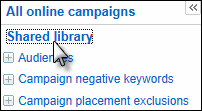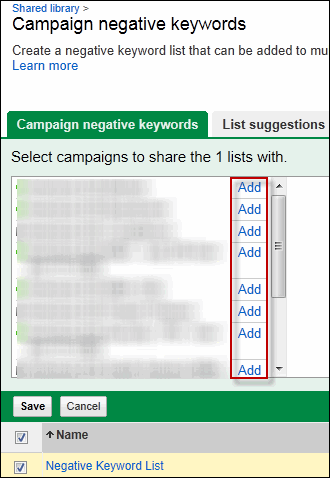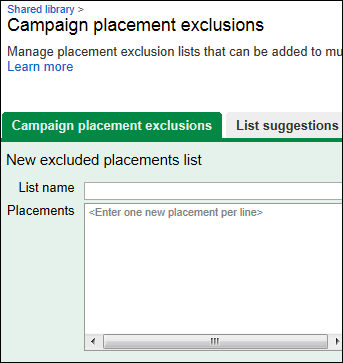
In recent weeks we’ve been creating a series of guides to various components of the Google Ads interface to help advertisers understand all of the features and functionality available to them within Google Ads (formerly known as AdWords). This is the first installment in our series on how to make the most of the Google Ads left navigation, and we’ll be focusing on the Google Ads Shared Library.
What Lives in the Shared Library, and What Purpose Does it Serve?
Within the Google Ads Shared Library are three core elements:
- Audiences – These are specific segmentations based on interest and the way people have interacted with your site (for more information on audiences check out our AdWords audience tab guide) that you can leverage within your display campaigns.
- Campaign Negative Keywords – These are negative keyword lists that you can leverage across your campaigns.
- Campaign Placement Exclusions – These are excluded or negative placement lists that you can leverage across your campaigns.
As you can see, the overall theme with these options is that you’re able to leverage the same component (audiences, negative keywords, and placement exclusions) in multiple areas of your account:
Let’s look at each of the specific options and how you can make use of them within your campaigns.
Shared Google Ads Audiences
This represents the master list of your Google Ads audiences – you can create Google Ads audiences that target specific topic areas, Google remarketing audiences (based on whether people have come to your site and how they’ve interacted with it), or a combination of the two. From there you can reference all of those audiences within the shared audiences library, or you can create a new audience from here as well.
This is a very helpful section for identifying the different audiences that are available in an account, and if you’re working on an account that you’re not familiar with you can access the code for the account’s retargeting campaigns to ensure that the proper code is installed on the proper pages.
Campaign Negative Keyword Lists
These are a great starting point and tool for most campaigns because they make setting a number of common negatives across a large number of ad groups very quick and easy. For most accounts you’ll have a lot of common negative keywords you want to exclude across your campaigns – some good examples might be “jobs” if you don’t have a job board on your subject, or “news” if you’re a product company and don’t want to drive traffic for people looking for news content, or you might want to create a branded negative keyword list or use negative keyword lists to better direct PPC traffic to the appropriate ad group. Whatever you include in it, once you’ve created a list, you can then very quickly apply it to any of your search campaigns:
Campaign Placement Exclusions
Similarly, when you’ve pulled a placement report and found thousands in wasted spend, you may often want to set those poor performing placements as negatives throughout your campaign. You simply create a list of placements you want to exclude:
And you can then push the exclusions to various campaigns in the same way you would with shared negative keyword lists.
Why Is All This Valuable?
The main utility of the shared library is in saving you time, particularly as your campaigns grow. As more and more advertisers use the program and Google continues to try to balance power (for the bigger AdWords spenders) with ease of use for small businesses, Google Ads is becoming a pretty complex, bloated product, so it’s necessary for them to layer on tools like shared libraries to help advertisers make changes across multiple campaigns, and being aware of where these features live and how to make use of them can mean significant time savings as you try to manage your Google Ads campaigns.









